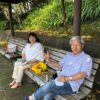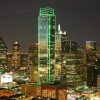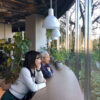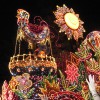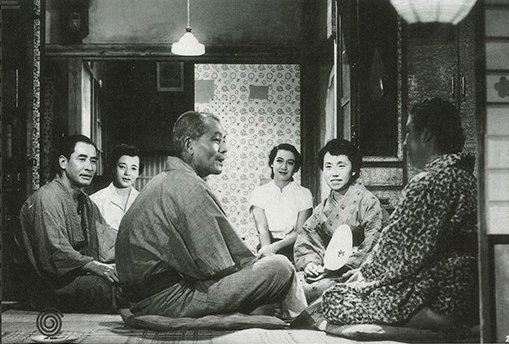
In the warm family picture painted by Yasujiro Ozu there are two types of natural light; glaring, bright sunlight and the incandescent lamp, symbolic of a cozy family.
In the film, daytime scenes always seem very carefully calculated. Doors and windows are always wide open and abundant light streams into the rooms. Family life is constructed against this bright external background. In other words, even indoors the presence of nature outside is sufficiently felt, as if one is outside when they are actually inside. So, in the film when a outdoor scene directly follows and connects to an indoor scene there is nothing unnatural about it and the screen flows uninterrupted. Nothing feels so good as when the sliding paper doors, sliding lattice doors, and storm shutters are all completely open in the house. Fresh air rushes in and moves about freely. This is characteristic of Japanese lighting culture and unique to old family homes built using a wooden framework construction style.
The “Tokyo Story” uses this feeling of openness during the daytime extremely well. The presence of the outdoors is sensed by bright sunlight or a cloudy sky and these backgrounds and natural light subtlety expose the delicate emotional bonds of the family.
After sunset, the second form of natural light emerges in the film. Compared to the feeling of openness during the day, a single incandescent lamp represents the warm family bonds. I typically call lamp light the second form of natural light. In Ozu`s films the incandescent lamps serve this purpose. 90% of the energy used to produce light from an incandescent lamp is released as heat, for a inefficient, rudimentary source of light. But this is a light bulb where the filament glows just like charcoal. So, to me, the incandescent lamp is an extend member of the family of light and fire and qualifies as the second form of natural light. In the “Tokyo Story”, a milky, white lamp shade covers an incandescent lamp, suspended over the center of family conversation. Clear placement of light in each scene creates a balance of light and shadow between the human relationships illuminated by this light. This effect could not be reproduced with the more energy efficient, but diluted and artificial shadows of the fluorescent lamp.
The black and white scenes in Ozu`s film express the beauty of light and shadow central to this family. Rash, subsidiary lighting does not aid the set during filming. Rather, just these two types of natural light, minimally used, basically emphasizes the black shadows. After WWII, Japanese families went to great pains to purge the darkness central to many homes. Inside and outside of homes, strong walls isolated and intense fluorescent lights blanked rooms in bright, white light, with no ability to produce shadows.
It’s ironic. In order to rid families of darkness, people chose to use bright lights, but the brighter the lighting the more strained families became. The beautiful light and shadows seen in “Tokyo Story” are, in retrospect, not just a personal preference, but, even in modern day life, a question of how much inconvenience and suffering can we stand?





